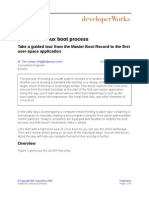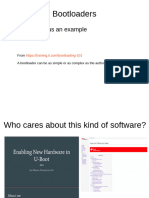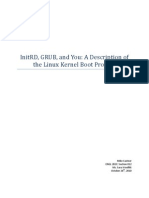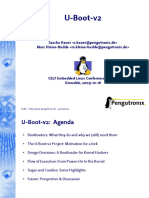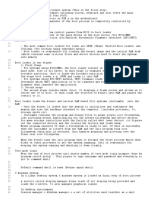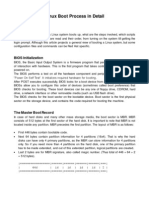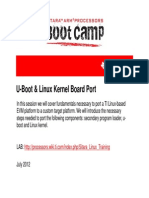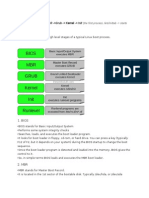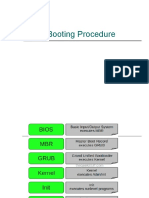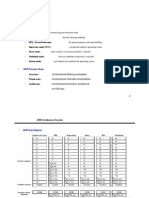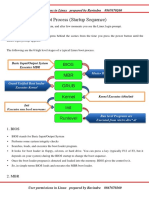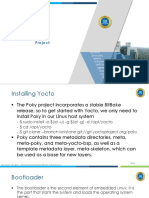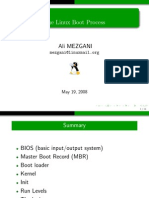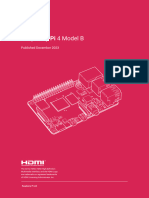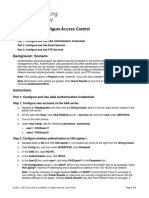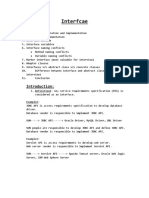0% found this document useful (0 votes)
24 views45 pagesEmbeddedLinux Boot 15 July
The document provides a comprehensive overview of the Linux boot process, detailing each stage from the ROM boot loader to user-level initialization. It explains the roles of various components such as the Secondary Program Loader (SPL), U-Boot, and the Linux kernel, along with the memory mapping involved. Additionally, it discusses boot modes, command line parameters, and the significance of each stage in establishing a functional Linux operating environment.
Uploaded by
senthil010Copyright
© © All Rights Reserved
We take content rights seriously. If you suspect this is your content, claim it here.
Available Formats
Download as PDF, TXT or read online on Scribd
0% found this document useful (0 votes)
24 views45 pagesEmbeddedLinux Boot 15 July
The document provides a comprehensive overview of the Linux boot process, detailing each stage from the ROM boot loader to user-level initialization. It explains the roles of various components such as the Secondary Program Loader (SPL), U-Boot, and the Linux kernel, along with the memory mapping involved. Additionally, it discusses boot modes, command line parameters, and the significance of each stage in establishing a functional Linux operating environment.
Uploaded by
senthil010Copyright
© © All Rights Reserved
We take content rights seriously. If you suspect this is your content, claim it here.
Available Formats
Download as PDF, TXT or read online on Scribd
/ 45









